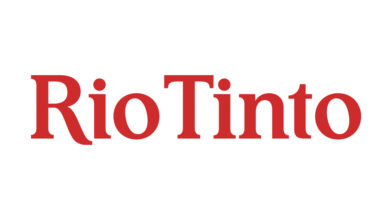Global Industrial Safety Market (2022 to 2028) – Size, Share & Industry Trends Analysis Report – ResearchAndMarkets.com

DUBLIN–(BUSINESS WIRE)–The “Global Industrial Safety Market Size, Share & Industry Trends Analysis Report By Type (Machine Safety and Worker Safety), By Industry, By Component, By Regional Outlook and Forecast, 2022-2028” report has been added to ResearchAndMarkets.com’s offering.
The Global Industrial Safety Market size is expected to reach $9.5 billion by 2028, rising at a market growth of 6.9% CAGR during the forecast period.
The management of all activities and events inside the industry to protect its personnel and assets by avoiding risks, hazards, accidents, and near misses is known as industrial safety. Governmental bodies keep a check on it through various laws & rules. Millions of occupational or industrial accidents occur every year, resulting in significant lost production time, making it critical to invest in industrial safety. Additionally, people who are truly injured lose a significant amount of production time owing to temporary & permanent disability, as well as those who assist those who are injured. As a result, industrial safety laws must be followed to attain production efficiency.
The Occupational Safety and Health Act of 1970 was a watershed moment in industrial safety laws. The Act was the first comprehensive federal industrial safety legislation, and it was near full favor vote passed by both chambers of Congress. The surge in the number of work-related fatalities in the 1960s, particularly the Farmington, West Virginia mine tragedy of 1968, which killed many miners, was one of the variables contributing to a solid support for the act.
The act was notable for putting a greater emphasis on preventing rather than compensating for occupational accidents & illnesses. The Occupational Safety and Health Administration (OSHA) & the National Institute of Occupational Safety and Health were established as a result of the act (NIOSH). The act included requirements such as developing obligatory safety & health standards, enforcing those standards, and establishing uniform record-keeping and reporting methods.
Workers” compensation laws vary greatly from state to state, although they always have the same basic goals. Employers must pay disability benefits, medical expenses, and compensation for lost work hours in the event of a work-related injury or illness. Workers, on the other side, are generally forbidden from filing a lawsuit against their employers, safeguarding corporations from costly liability settlements. “Workmen’s compensation legislation has done much more to promote safety than all other measures combined,” argues David Colling in his book Industrial Safety: Management and Technology. “Employers found that focusing on safety was more cost-effective than compensating employees for injury or death.”
Market Growth Factors
Strict impositions for safety regulations
The expansion of the industrial safety industry is mostly due to mandates for safety laws. The US government & governments in Europe are working to prevent mishaps by enforcing regulations relating to people and process safety and putting certified equipment in hazardous locations, such as switches, explosion-proof sensors, and actuators.
Safety standards & regulatory measures have been implemented by organizations like as the Occupational Safety & Health Administration (OSHA), the International Standard Organization (ISO), the International Electro technical Commission (IEC), and the American National Standards Institute (ANSI) to monitor and improve the efficiency of industrial processes. Machine safety laws, like the EU Machinery Directives and OSHA regulations in North America, have aided the expansion of the industrial safety product industry.
Growing utilization of the Industrial Internet of Things
The Internet of Things is opening up new possibilities for integrated safety & compliance services. Sensors that measure pressure, flow, level, temperature, & vibration can be used by the IIoT to collect data and communicate it to monitoring systems. The data is sent across wired & wireless networks, allowing for real-time analysis, alarms, and potential solutions in the event of an emergency. Companies can combine their operations with safety systems and monitor them in real-time using the IIoT. IIoT allows for quick monitoring, analysis, & control, as well as virtual administration of physical systems, resulting in improved performance.
Marketing Restraining Factor:
Difficult to deal with any machinery-related dangers
Overall machine guarding necessitates a risk assessment that includes input from machine operators, maintenance workers, supervisors, engineers, safety specialists, machine guarding experts, & original equipment manufacturer (OEM) representatives, in addition to guard designers. It’s hard for a designer to foresee all the dangers involved with equipment setup, operation, inspection, & maintenance on their own.
When personnel needs to reach locations inside machine guards, meticulous planning & execution are required. Inadequate risk assessment can also lead to the omission of important requirements for the design and performance of interlock devices and monitoring components like relays and safety-rated programmable logic controllers, which are used for safety while performing substitute safeguarding measures.
Scope of the Study
Market Segments Covered in the Report:
By Type
- Machine Safety
- Worker Safety
By Industry
- Automotive
- Food & Beverages
- Chemicals
- Semiconductor
- Aerospace & Defense
- Healthcare & Life Sciences
- Metals & Mining
- Energy & Power
- Oil & Gas
- Others
By Component
- Presence Sensing Safety Sensors
- Safety Controllers/ Modules/ Relays
- Programmable Safety Systems
- Safety Interlock Switches
- Emergency Stop Controls
- Two-Hand Safety Controls
- Others
By Geography
- North America
- Europe
- Asia Pacific
- LAMEA
Key Market Players
- Omron Corporation
- Yokogawa Electric Corporation
- HIMA Paul Hildebrandt GmbH
- Baker Hughes Company
- Emerson Electric Co.
- Siemens AG
- Rockwell Automation, Inc.
- ABB Group
- Honeywell International, Inc.
- Schneider Electric SE
For more information about this report visit https://www.researchandmarkets.com/r/28wcfv
Contacts
ResearchAndMarkets.com
Laura Wood, Senior Press Manager
[email protected]
For E.S.T Office Hours Call 1-917-300-0470
For U.S./CAN Toll Free Call 1-800-526-8630
For GMT Office Hours Call +353-1-416-8900




